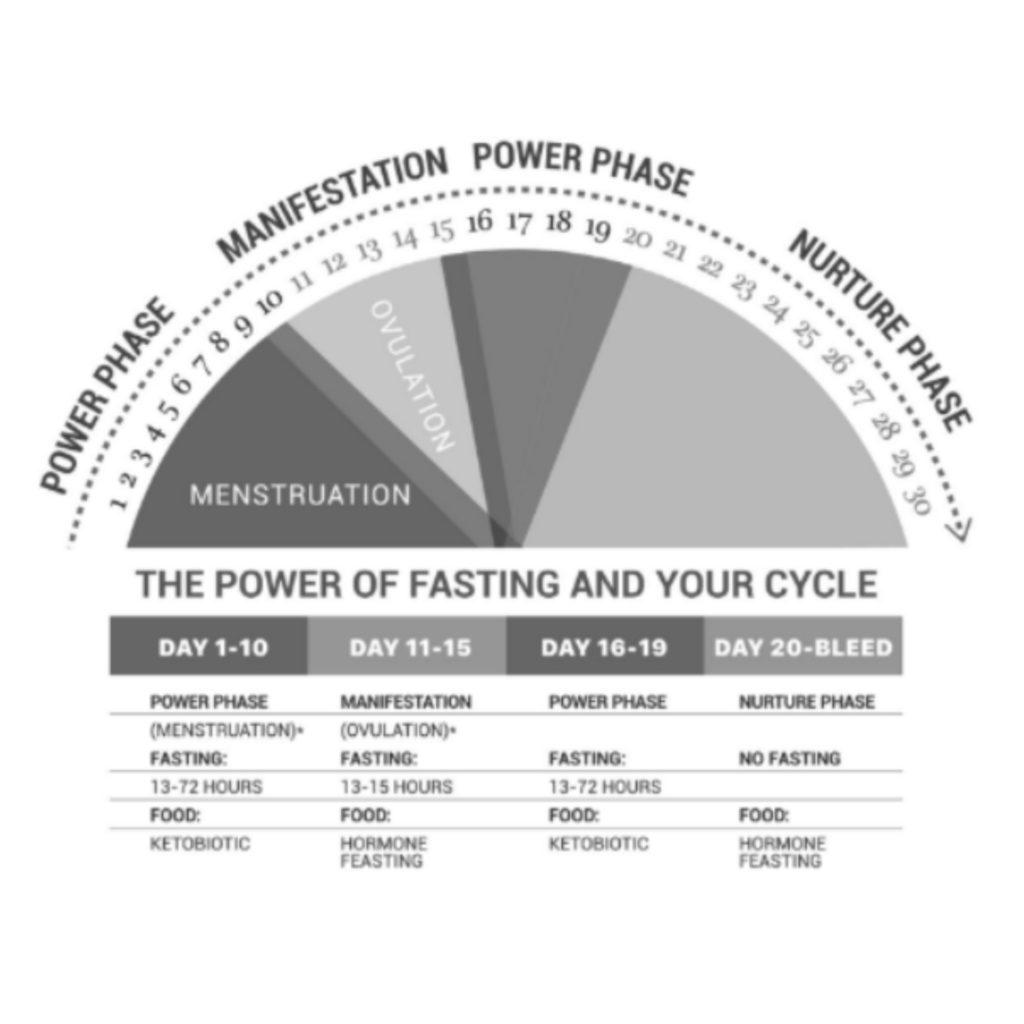Midlife changes everything — including how your body responds to fasting. This post is here to help you reconnect with your body and gain clarity on how fasting in midlife can support your healing.
Fasting Looks Different After 40
Fasting in midlife is more than a trend — it’s a powerful way to support hormone balance, reduce inflammation, boost energy, and tap into your body’s natural healing rhythms. But here’s the key: fasting after 40 is not the same as it was in your 20s or 30s.
Your hormones have shifted. Your metabolism has changed. Your stress levels might be higher and your body no longer responds the same way to skipping meals or cutting calories.
This is exactly where Dr. Mindy Pelz’s Fast Like a Girl makes a real difference. It offers a hormone-smart approach to fasting that helps you heal, not crash. Instead of pushing harder, it’s about syncing with your cycle (or hormonal rhythms post-menopause), listening to your body, and using the right fasting tools at the right time.
If you’ve felt frustrated, exhausted, or confused about what works now — you’re not alone. In this post, we’ll cover:
- What makes fasting in midlife different from earlier years
- How fasting helps your body heal and rebalance after 40
- The safest and most effective fasting windows for women
- How to sync fasting with your hormonal rhythm (even without a cycle)
- What to eat between fasts to support energy, hormones, and results
- Practical strategies to avoid burnout and make fasting sustainable.

Understanding Hormonal Shifts in Midlife
One of the biggest reasons fasting needs to look different after 40 is because your hormones are changing.
As women enter perimenopause, estrogen and progesterone no longer follow a predictable monthly rhythm. Estrogen begins to fluctuate — sometimes spiking, sometimes crashing — while progesterone steadily declines. These shifts affect everything from metabolism and mood to sleep and fat storage, and they change how your body responds to food, stress, and fasting.
If you’ve ever felt like “nothing works anymore,” you’re not imagining it. These hormonal changes make your body more sensitive to blood sugar swings, inflammation, and cortisol — and they require a more responsive, gentle approach.
1. Estrogen & Progesterone
Estrogen, which helps regulate metabolism, energy, and mood, becomes unpredictable in perimenopause — rising and falling in ways that can lead to symptoms like bloating, weight gain, brain fog, and anxiety. In postmenopause, estrogen levels settle at a significantly lower baseline.
Progesterone, your calming and sleep-supportive hormone, begins to decline steadily. Lower progesterone can heighten your stress response and make it harder to recover from poor sleep or overstimulation.
This hormonal imbalance is why syncing your fasting approach with your body’s rhythm — or adjusting your strategy post-menopause — makes such a difference. Fasting through the lens of hormone health gives your body what it needs, rather than pushing it further out of balance.
2. Insulin Sensitivity
As estrogen declines, insulin sensitivity drops, making it harder for your body to manage blood sugar. You may find yourself craving sugar, gaining belly fat, or experiencing energy crashes. The good news? Fasting, when done correctly, improves insulin sensitivity and trains your body to burn fat more efficiently, helping restore metabolic flexibility.
3. Cortisol & Stress
Midlife stress from caregiving, work, and changing roles can raise cortisol levels. At the same time, your body becomes more sensitive to cortisol, your main stress hormone.
High cortisol levels can spike blood sugar, interfere with sleep, and stall weight loss — which is why how and when you fast matters. The goal isn’t to fast harder, it’s to fast smarter. A hormone-supportive approach helps you avoid adrenal burnout and actually lower stress in the body.
Want to learn more about what’s happening with your hormones? Check out my post on Perimenopause 101 for a clear breakdown of key shifts and how to support your body through them.

The Healing Power of Fasting in Midlife
Fasting isn’t just about skipping meals — it’s about giving your body space to heal.
In midlife, your body is under more stress and your repair processes naturally slow down. Strategic fasting helps restore balance by calming inflammation, improving metabolic health, and reactivating systems that support deep healing without the need for extreme diets or endless supplements.
Fasting supports healing after 40 in four key ways:
1. Reduces Inflammation
Chronic inflammation is at the root of many midlife health challenges — from joint pain and brain fog to stubborn weight gain and fatigue. Fasting turns on anti-inflammatory pathways and helps your body clear out damaged cells, lowering your inflammatory load and giving your systems a chance to reset.
2. Supports Cellular Repair (Autophagy)
Autophagy is your body’s natural clean-up system breaking down and recycling old, damaged cells to make room for healthier ones. Fasting activates autophagy, typically beginning at 17 hours and increasing with longer fasts. This process supports longevity, hormone balance, and cellular resilience.
3. Improves Brain Health & Mental Clarity
Midlife brain fog is real, and fasting can help lift it. Fasting supports brain health by boosting levels of BDNF (brain-derived neurotrophic factor), a key protein involved in memory, learning, and cognition. It also increases ketone production, which provides a clean, efficient fuel source for the brain and helps reduce oxidative stress leading to sharper focus, better mood, and clearer thinking.
4. Helps Rebalance Hormones
By reducing blood sugar spikes and calming cortisol, fasting helps restore your body’s hormonal equilibrium. This can lead to fewer hot flashes, better sleep, more stable energy, and even improved cycle regularity (for those still menstruating). For postmenopausal women, it can help ease the intensity of symptoms and create a more stable internal rhythm.
Fasting in midlife is about renewal. Giving your body a break from constant digestion allows it to heal and come back into balance.

How to Approach Fasting in Midlife
The next step is learning how to fast in a way that supports healing — not stress. The Fast Like a Girl method offers a flexible, hormone-aware approach designed specifically for women. Because our hormones fluctuate, even after menopause, our fasting rhythm needs to reflect those changes.
Whether you’re still cycling or fully postmenopausal, syncing your fasting windows to your hormonal patterns helps you get the benefits without the burnout.
1. Start with Intermittent Fasting (13–16 hours)
This is the foundation for most women. A 13–16 hour fast (for example, from 7pm to 10am) gives your body enough time to reset blood sugar and insulin levels without overwhelming your system. It’s gentle, sustainable, and can be used almost daily — especially during times of the month when estrogen is higher or more stable.
You can start with 12 hours and slowly increase by 30-minute increments if needed. The goal is not perfection — it’s consistency and how you feel.

2. Time Longer Fasts Around Hormonal Phases
For women who are still cycling, syncing your fasting rhythm with your hormonal phases can make a big difference. Certain phases support longer fasts, while others call for more rest and nourishment.
- Power Phases (Days 1–10 & Days 16–19) are ideal for longer fasts (17+ hours or even 24 hours), thanks to the support of rising or stable estrogen. These windows enhance fat-burning and cellular repair.
- Manifestation Phase (Days 11-15) and Nurture Phase (Days 20–28) are when progesterone rises (if you’re still ovulating). Your body needs more rest and carbs. Fasting windows should be shortened, and longer fasts should be avoided.
You can learn more about syncing fasting with your hormonal rhythm in my blog post on Cycle Syncing in Midlife.
If you’re in menopause, your body no longer follows a monthly cycle but it still benefits from a rhythm. In my Fasting Reset blog post, I outline three supportive fasting strategies for postmenopausal women:
- Daily intermittent fasts (13–16 hours) to balance blood sugar and insulin
- One longer fast (24–36 hours) weekly or monthly for deeper healing
- Recovery days with no fasting or shorter windows to avoid burnout and protect hormone health.
Rotating these options based on your energy, stress levels, and healing goals helps make fasting sustainable and effective in this stage of life.
3. Match Your Fasting to Your Life (Not the Other Way Around)
Women in midlife are often juggling a lot — careers, caregiving, community, and more. So your fasting rhythm should support your life, not control it.
Key tips:
- Don’t fast through exhaustion or high-stress days
- Don’t fast if you didn’t sleep well — cortisol will already be elevated
- Always eat enough nourishing food between fasts to support your hormones
- Use fasting as a tool, not a rule.

What to Eat to Support Hormones and Energy
Fasting is only one part of the equation. What you eat between fasts is just as important as the fast itself — especially in midlife.
Your body needs nutrients to rebuild hormones and stay resilient. Skipping protein or relying on processed foods can undo fasting benefits This is where nourishment becomes non-negotiable. To get the most from your fasting lifestyle, focus on three key considerations.
1. Focus on Nutrient-Dense, Whole Foods
Every meal is a chance to send your body the signal: “You’re safe. You’re supported.” Prioritize foods that give back, not take away.
Build your meals around:
- Clean protein (wild-caught fish, pasture-raised meats, eggs, legumes, tempeh) to support hormone production and satiety
- Healthy fats (avocado, olives, nuts, seeds, ghee, coconut oil) to fuel your brain and stabilize blood sugar
- Fiber-rich vegetables (especially cruciferous veggies) to support gut health and estrogen detox
- Fermented foods (sauerkraut, kimchi, yogurt, kefir) to nourish your microbiome
- Colorful, polyphenol-rich plants (berries, greens, herbs) to reduce inflammation and feed beneficial gut bacteria.
2. Avoid Foods That Work Against You
Highly processed carbs, refined sugars, and inflammatory oils (like canola, soybean, or corn oil) spike blood sugar and promote chronic inflammation, which is a root cause of many midlife symptoms like joint pain, fatigue, brain fog, and stubborn weight gain. They also impair gut health, worsen insulin resistance, and contribute to hormone imbalances.
You don’t have to be perfect. Just aim to reduce or replace:
- Sugary snacks with whole food alternatives
- Refined grains with root vegetables or gluten-free options
- Inflammatory oils with avocado, olive, or coconut oil
3. Support Hydration and Electrolytes
Midlife women are especially prone to electrolyte imbalances and fasting can make this worse if you’re not replenishing. Drink plenty of water throughout the day, and consider adding:
- A pinch of sea salt to your water
- Electrolyte mixes without added sugar (like LMNT or Redmond Re-Lyte)
- Herbal teas or lemon water during fasting windows
Staying hydrated helps reduce cravings, headaches, and fatigue — and supports detox and digestion.
Fasting works best when it’s paired with nourishment — not restriction. Give your body what it needs, and it will respond with more energy, clarity, and resilience.

How to Make Fasting Sustainable in Midlife
Fasting isn’t meant to be perfect — it’s meant to be personal.
Midlife calls for a more intuitive approach. Flexibility, recovery, and self-awareness make fasting sustainable and supportive not just another to-do. The most effective fasting rhythm is the one that adapts with you honoring your energy, your hormones, and your life.
1. Listen to Your Body
Some days, you’ll feel strong and clear — other days, your body may need more rest or food. That’s normal. Use these cues to adjust:
- Feeling energized and clear? It’s a good day for a longer fast.
- Feeling tired, anxious, or didn’t sleep well? Choose a shorter fast or skip it altogether.
Tracking your mood, energy, and sleep alongside your fasting routine can help you spot patterns and stay in tune with what works best for you.
2. Build in Recovery Days
You don’t need to fast every day to see results. In fact, taking 1–2 days off each week (or more, if you’re cycling) helps avoid stress buildup and allows your hormones to stay balanced. These are days to nourish, relax, and reset.
3. Don’t Forget About Stress & Movement
Your body doesn’t just respond to food — it responds to everything. Chronic stress, overtraining, or lack of movement can all stall progress, even with a solid fasting routine.
Support your fasts with:
- Gentle movement like walking, stretching, or yoga
- Deep breathing, meditation, or time outdoors
- A consistent sleep schedule (7–9 hours)
- Less caffeine (none after noon!) to protect cortisol levels.
Fasting is one tool in a bigger picture of hormone-friendly living — and layering it into your self-care rhythm makes it far more sustainable.
4. Be Kind to Yourself
You’re not doing this to punish your body — you’re doing it to support it. Fasting isn’t all-or-nothing. It’s a practice. Some weeks will flow easily. Others won’t. What matters is that you keep coming back to it with curiosity and compassion.
Bringing It All Together
Fasting in midlife isn’t about restriction — it’s about rhythm. When done right, it becomes a powerful tool for healing, hormone balance, and renewed energy. But the approach matters.
The old rules — skip breakfast, push through fatigue, eat less and exercise more — simply don’t work anymore. Your body is asking for something wiser, more supportive, and more aligned with this phase of life.
With the right rhythm, nourishment, and recovery, your body has the space it needs to heal and thrive.
Ready for clarity on what will actually support your body in this season? Book a free 30-minute Insight Session and let’s talk.
The content provided in this post is for informational purposes only and is not intended to be a substitute for professional medical advice, diagnosis, or treatment. Always seek the advice of your physician or other qualified health provider with any questions you may have regarding a medical condition. Never disregard professional medical advice or delay in seeking it because of something you have read in this post.













+ Show / Hide Comments
Share to: